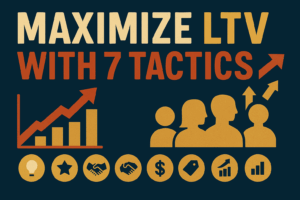The Repeat Purchase Behavior report gives Sellers insight into how many repeat buyers they have and how these purchases break down across ASINs within their product catalog. The report outlines units ordered, unique customers, and repeat customer percentages. It also gives you a monetary value of the repeat purchases made and what percentage of the ASIN’s total sales were repeat purchases.

What can you do with Repeat Purchase Behavior?
The Repeat Purchase Behavior report provides some great features. However, most of its benefits are strategic, rather than tactical — for example, helping you better understand your customers and products, rather than make more informed ad purchases.
The biggest value offered by this report is the ability to identify which products are purchased again and which are not. Here are a few ways you can use this information to your advantage:
Understand how many customers you have: A great value of this report is to identify the total number of customers that you have. This can help you better understand your brand’s market penetration and make distinctions between different products.
Make strategic catalog decisions: Repeat purchases provide you with rudimentary customer lifetime value characteristics. Identifying a product as one that is repeatedly purchased allows you to increase the overall value you estimate generating with the acquisition of a new customer for that product. Knowing this can change the advertising spend and priorities for that product — allowing you to spend more than would otherwise seem useful. Conversely, products that have no repeat purchase histories can be identified and looked at more singularly when it comes to customer acquisition costs.
Targeting your own customers: Products that get purchased again and again are good targets for repeat advertising. This might be done on Amazon through Sponsored Product ads or discounts for repeat purchasing, or off Amazon with email lists. Fundamentally, this information gives you insights into how customers, in general, interact with your product line — don’t forget that.
Create multi-packs: Although not a proper ‘bundle’ by Amazon standards, products that are purchased repeatedly are obvious good candidates for multi-packs. This can help you raise your average order value and create a more convenient product for your customers.
What can't you do with Repeat Purchase Behavior?
Understand low volume patterns: To be effective, the Repeat Purchase Behavior report requires relatively high volumes of purchases. Low volume stats are susceptible to anomalies to be representative.
Understand actual customer lifetime value: Although one of the most captivating features of this report is its ability to start estimating the value that repeat purchases generate, this should not be confused for real CLTV. This report does not capture the total repeat purchases of your brand that customers make — just of a single product.
In order to get into real CLTV calculations, you will need to pull data from other sources and engage in far more complex computations, generally aided by third-party analytics tools. What’s important to remember is that products that appear to generate little long-term value according to the Repeat Purchase Behavior report might be your biggest CLV generators. You simply can’t tell because their value as gateway products to your brand is obscured by the focus of this report.
You also need to be aware of the buying cycles for products. A monthly review of the data from this report would be a decent frequency to gain the most insight. Although it has limitations, this report is an excellent way to evaluate your campaigns by seeing which products tend to be repeat purchases and help target those shoppers.


